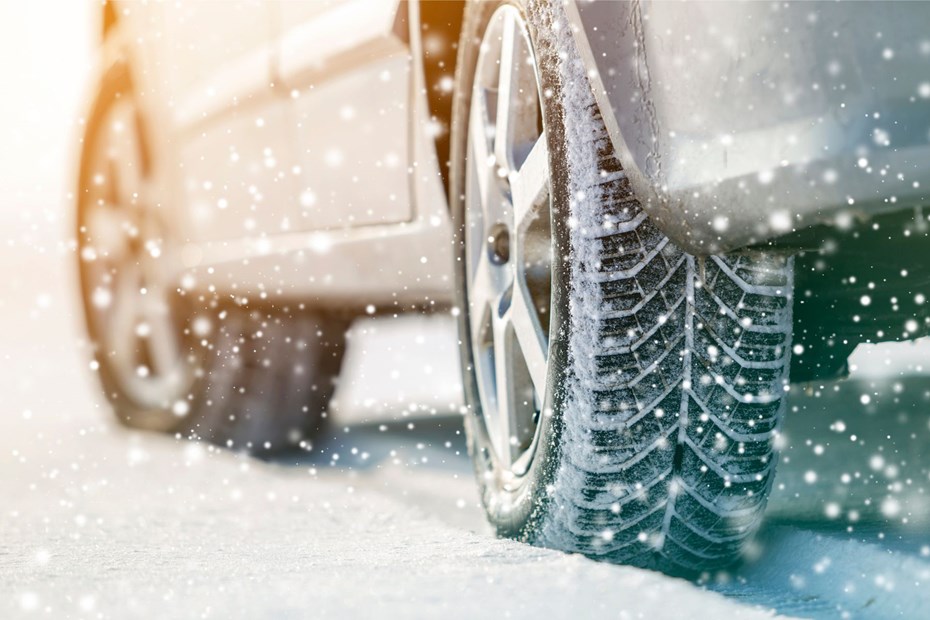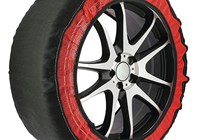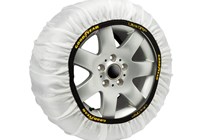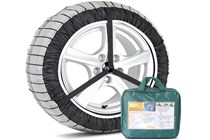You might be wondering what the purpose of snow socks would be? Snow chains are overkill for all but the rarest of heavy snowy circumstances in the UK. Yet many of us like to have an extra weapon, other than excellent winter tyres, in our winter driving kit that can give us extra traction on icy or snowy roads. Snow socks might just be able to fill that gap.
What are they?
Where snow chains are big clunky things, snow socks are made from a synthetic fabric such as polypropylene. They are also a lot easier to install, which makes things much easier when it’s freezing outside and you just want to get inside your car where the heating is. The idea is the same as snow chains: to improve grip on snow and ice-covered roads. But the main difference is the fitting.
As per the name, they effectively act as socks for your tyres and wrap around them like a circular-shaped coat. Do note that snow socks aren’t fully approved in some European countries, yet they are perfectly legal in the UK. In some areas during winter, they can be as useful as ice scrapers.
The best at a glance:
Editor’s pick: Silknet Snow Socks – buy from Amazon.
Best for grip: Sumex Anti Skid Snow Socks – buy from Amazon.
Best for large tyres: Sumex Husky Textile Snow Socks – buy from Amazon.
What this means is that if you plan to travel abroad to a ski resort over the winter, a set of snow chains will be your safer bet. However, for doing short, slow trips around in snowy parts of the UK, they can make a massive difference to grip. Once damp, they really hold on tight and give you a helping hand where you really need it. Although we do still recommend carrying around a good snow shovel for emergencies.
Editor's pick
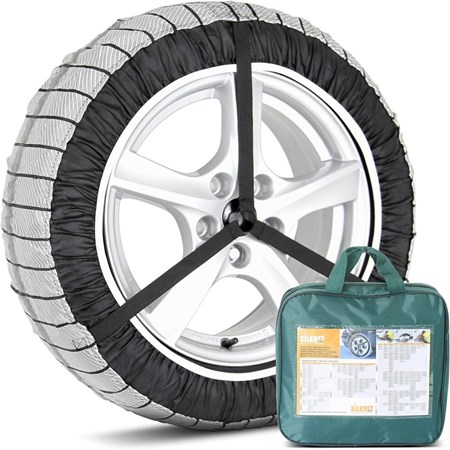

Unlike other snow socks, these have straps to make fitting easier. The design is quite clever too. The fabric pulls itself against the tyre, sort of like the self-tensioning system that some more expensive snow chains have, and creates folds in the fabric to improve traction.
Pros
- Clever technology
- Quite easy to fit
Cons
- Maximum driving speed of 24.8mph
Best for grip
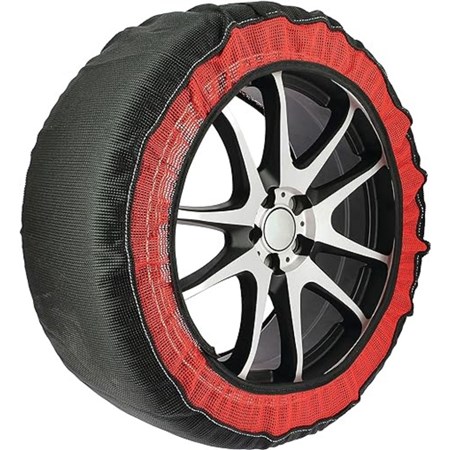

The only downside here is the price. While very effective compared to other snow socks, the cost puts them in competition with some snow chains.
Pros
- Great for sticking to the road
- Clever materials
Cons
- Only fits on smaller wheels
Most universal fit
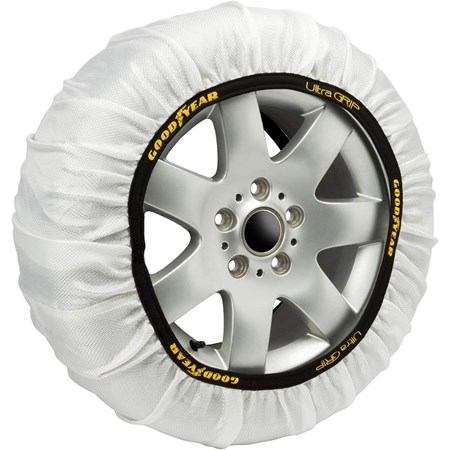

However, they aren’t quite as grippy as the snow socks above. And speed is limited to 40km/h (24.8mph) as with most snow socks.
Pros
- Plenty of sizes available
- Great value
Cons
- Not quite as grippy as others
Best for majority of normal cars
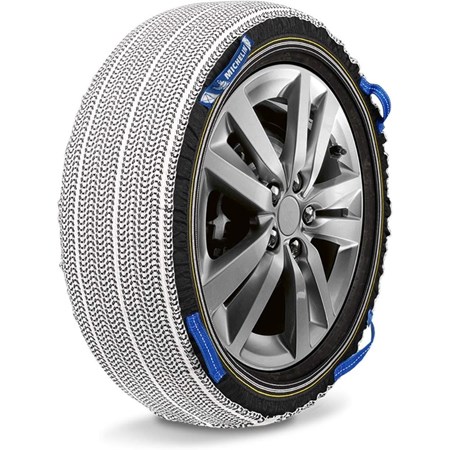

With that said, anything riding on 295s or larger isn't covered. And that's a shame considering how well Michelin cater to that performance-orientated car and tyre market.
Pros
- Great range in sizes
- Top quality textile
Cons
- Performance cars aren't as well-covered
Best for larger tyres
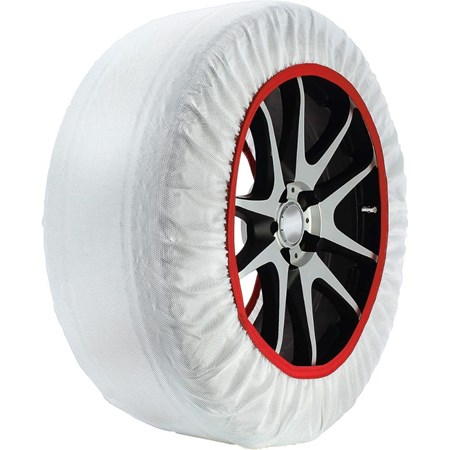

But rest assured, tyres ranging into the small, compact car categories are covered too. Another great aspect is Husky states these snow socks can be machine washed at 30°C.
Pros
- Wide array of sizes
- Easy to fit
Cons
- Not quite as great quality as other options
Best soft snow chains
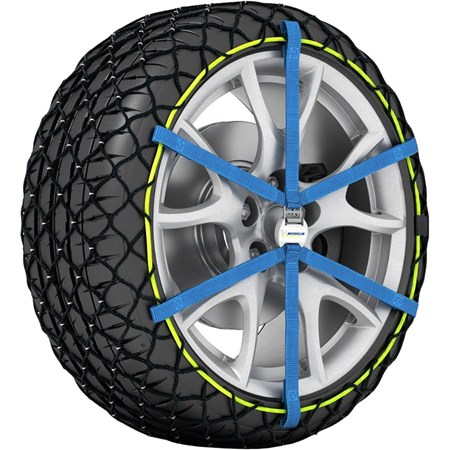

There's only a limited number of tyres these things fit, ranging from 255/60/R18s to 265/70/R16s, so they won't be compatible for a large number of vehicles and subsequent wheels.
Pros
- Effective grip solution that won't break your finger nails
- Approved in all European countries
Cons
- Limited sizes
Snow socks vs chains – which is better?
In essence, snow chains are the superior answer when it comes to grip on snow and ice. This means that in countries on the continent that require snow chains to be carried or fitted in certain regions or roads, snow socks are not an approved alternative. But in the UK, they’re perfectly legal and have a number of upsides. Because they’re made from textiles, they compact down and are easier to store than chains. Snow socks are often cheaper than chains too.
Driving with snow socks
To fit them, you simply pull it over the wheel, beginning with the side facing into the wheel arch. You then need to drive forward a little to rotate the wheel enough to fit them fully. Unlike many chains, snow socks don’t need further adjustment. Snow socks are fitted to a car’s driving wheels (front wheels for four-wheel drive cars).
The principles of driving with snow socks are the same as when using a set of snow chains. Snow socks should only be used on icy or snow-covered roads and should be removed as soon as the road surface is clear. As with chains, you need to drive slowly (no more than 25mph) and smoothly when using them. The car won’t respond as quickly as it would on a dry road.
Aaron Hussain is a commercial content writer at Bauer Media writing for Parkers and CAR. He is obsessed with classic cars and anything with a fascinating story to tell.
Sign up to the Parkers Newsletter to keep up to date with more of the latest reviews, news, and recommendations from the Parkers team.
Just so you know, whilst we may receive a commission or other compensation from the links on this page, we never allow this to influence product selections – read why you should trust us.



